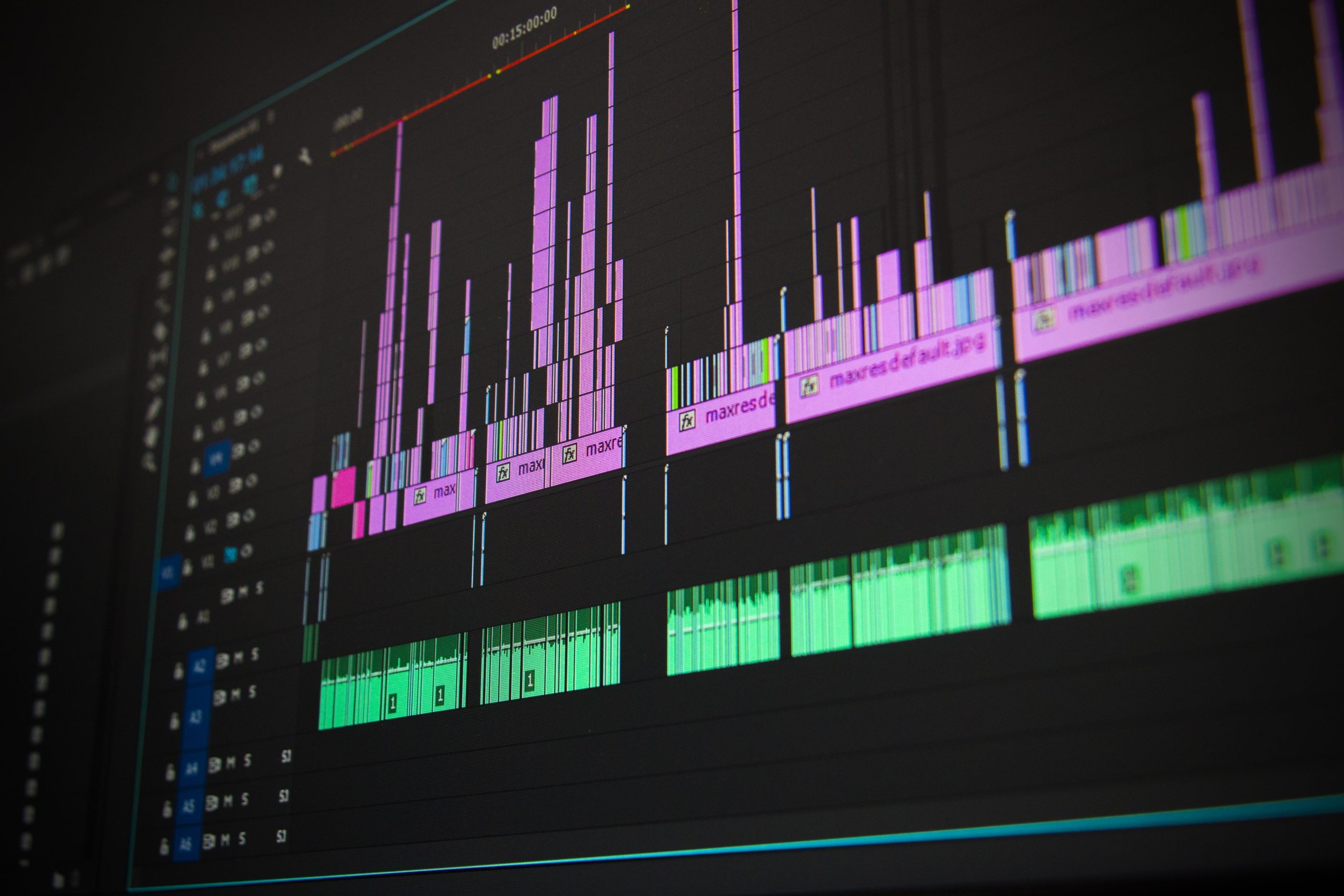When it comes to podcasting, there’s one element that can make or break your show: audio quality. Whether you’re a seasoned podcaster or just starting out, having clear and crisp audio is crucial for engaging your audience and keeping them coming back. From choosing the right microphone like the Shure SM7B or the Blue Yeti, to investing in studio monitors such as the Audio-Technica ATH-M50x or the KRK ROKIT 5 G4, there are numerous tools and equipment available to help you achieve professional-grade sound. In this article, we will explore the importance of audio quality in podcasting and how it can enhance the overall listening experience for your audience.
Understanding Audio Quality
When it comes to podcasting, audio quality plays a crucial role in delivering a captivating and professional listening experience for your audience. High-quality audio ensures that your message is clear, engaging, and easy to comprehend. In this article, we will explore the definition of audio quality, its significance in podcasting, and the factors that affect it.
Defining audio quality
Audio quality refers to the overall sound characteristics of a recording, including clarity, richness, depth, and absence of distortions or unwanted noise. It encompasses various aspects such as frequency response, dynamic range, and signal-to-noise ratio. Good audio quality allows listeners to fully immerse themselves in your podcast, enhancing their engagement and enjoyment.
The role of audio quality in podcasting
In the world of podcasting, audio quality is of utmost importance. It directly influences the listener’s engagement, perception of your brand, and overall listening experience. High audio quality captivates your audience, enabling them to fully grasp and appreciate the content you are delivering. On the other hand, poor audio quality can be highly detrimental to your podcast’s success and can result in disengaged listeners, negative brand image, and potential technical disruptions.
Factors that affect audio quality in podcasting
Several factors can impact the audio quality of your podcast recordings. Let’s explore some key factors:
-
Microphone selection: The microphone you choose has a significant impact on the quality of your audio. Different microphones have different characteristics that can enhance or detract from the clarity and richness of your voice. Factors to consider include microphone type (dynamic or condenser), polar pattern, and frequency response.
-
Audio interface: An audio interface serves as the gateway between your microphone and your computer. It converts analog signals from the microphone into digital data that can be processed by your recording software. A good quality audio interface ensures accurate signal capture, minimizing noise and distortions.
-
Headphones: The right pair of headphones allows you to monitor and fine-tune your audio while recording and editing. Closed-back headphones provide better sound isolation, preventing sound leakage into the microphone. Look for headphones that offer a balanced frequency response and accurate reproduction of sound.
-
Recording environment: The acoustic characteristics of your recording environment can significantly affect the audio quality. Factors such as room size, reflections, and ambient noise can introduce unwanted distortions and affect overall clarity. Consider using soundproofing materials, such as acoustic panels or isolation shields, to minimize external noise and enhance sound quality.
Now that we understand the importance of audio quality in podcasting and the factors that influence it, let’s delve into the impact of poor audio quality.
The Impact of Poor Audio Quality
When your podcast’s audio quality is subpar, it can have several negative consequences. Let’s explore some of the most significant impacts of poor audio quality.
Listener engagement and retention
High-quality audio is essential for keeping your listeners engaged throughout your podcast. When audio quality is poor, listeners may struggle to understand and follow your content, leading to disengagement and decreased attention span. Crisp and clear audio ensures that your message is easily comprehensible, resulting in increased listener engagement, longer listening durations, and improved content absorption.
Listener perception and brand image
Your podcast’s audio quality directly influences how listeners perceive your brand and content. When the audio is professional and polished, listeners are more likely to perceive your podcast as credible, authoritative, and worth their time. In contrast, poor audio quality can create a negative impression, indicating a lack of professionalism, attention to detail, and commitment to delivering quality content. This perception can damage your brand image and make it challenging to attract and retain listeners.
Potential technical issues and disruptions
Using low-quality audio equipment or neglecting proper recording techniques can lead to various technical issues during podcast production. Unwanted background noise, distortions, clipping, and inconsistent volume levels can diminish the overall listening experience. Poor audio quality can also result in disruptions such as dropouts, pops, clicks, or sudden changes in audio quality, which can be highly distracting and irritating for the listener.
To ensure your podcast stands out with exceptional audio quality, it is essential to invest in the right equipment. Let’s explore the key equipment required for achieving good audio quality in podcasting.

Essential Podcasting Equipment for Good Audio Quality
When it comes to podcasting, having the right equipment is crucial for achieving high-quality audio. Let’s discuss the essential pieces of equipment that can make a significant difference in your podcasting journey.
The role of microphones in audio quality
The microphone you choose can greatly influence the quality of your podcast’s audio. Different microphones offer distinct characteristics in terms of sensitivity, frequency response, and polar patterns. Here are a few popular microphones known for their outstanding audio quality:
Shure SM7B Cardioid Dynamic Microphone
The Shure SM7B is a renowned dynamic microphone trusted by professionals worldwide. It provides a warm and natural sound reproduction while offering excellent rejection of background noise. The cardioid polar pattern focuses on capturing sound from the front, minimizing ambient noise and delivering a crystal-clear recording.
Blue Yeti USB Microphone
The Blue Yeti USB microphone is a popular choice among podcasters for its simplicity and exceptional audio quality. It offers multiple polar patterns (cardioid, stereo, omnidirectional, bidirectional), making it versatile for various recording situations. With its high-quality analog-to-digital converters, the Blue Yeti delivers rich, detailed, and true-to-life sound.
Heil Sound PR-40 Dynamic Studio Recording Microphone
The Heil Sound PR-40 is a dynamic microphone tailored for professional voice recording. Its tight cardioid polar pattern reduces background noise and feedback, resulting in clean and focused audio. With its flat frequency response and excellent transient response, the Heil PR-40 captures the subtle nuances of your voice with remarkable clarity.
Sennheiser E835 Dynamic Cardioid Vocal Microphone
The Sennheiser E835 is a reliable and affordable dynamic microphone suitable for podcasting. Its cardioid polar pattern effectively isolates your voice while rejecting background noise. This microphone offers a smooth and natural sound, making it a popular choice for both amateurs and professionals.
Importance of a good audio interface
An audio interface is a vital component in ensuring high-quality audio recordings. It serves as the intermediary between your microphone and your recording device, converting analog signals into digital data. Here are a few audio interfaces known for their exceptional performance:
Focusrite Scarlett 2i2 (3rd Gen) USB Audio Interface
The Focusrite Scarlett 2i2 is a highly regarded audio interface that offers excellent sound quality and ease of use. With its high-performing preamps and A/D converters, it captures audio with remarkable clarity and fidelity. The Scarlett 2i2 also provides low-latency monitoring, allowing you to hear yourself in real-time without any noticeable delay.
Behringer Xenyx X1204USB Premium 12-Input Mixer
The Behringer Xenyx X1204USB is a versatile mixer that serves as both an audio interface and a control center for your podcasting setup. It features premium-quality preamps, British-style EQs, and onboard compressors, allowing for precise control over your audio. The Xenyx X1204USB also offers built-in USB connectivity, making it effortless to integrate with your recording software.
Yamaha MG10XU 10-Input Stereo Mixer with Effects
The Yamaha MG10XU offers a comprehensive solution for podcasters who require more inputs and additional features. With its studio-grade preamps and powerful digital effects processor, this mixer ensures exceptional audio quality. The MG10XU also provides USB connectivity and built-in audio interface capabilities, making it a versatile choice for podcasting setups.
Choosing the right headphones for podcasting
Having reliable headphones is essential for monitoring and fine-tuning your audio while recording and editing. Here are a few headphone options known for their accurate sound reproduction and comfort:
Audio-Technica ATH-M50x Professional Studio Monitor Headphones
The Audio-Technica ATH-M50x is a popular choice among podcasters and sound professionals. These closed-back headphones offer outstanding sound isolation, preventing sound leakage into the microphone. With their accurate frequency response and robust construction, they provide a reliable monitoring experience, allowing you to detect any imperfections in your audio.
AKG K240 Studio Semi-Open Over-Ear Professional Studio Headphones
The AKG K240 Studio headphones are renowned for their balanced and accurate sound reproduction. With their semi-open design, they offer a spacious soundstage and natural sonic imaging, making them suitable for critical listening and audio editing. The lightweight construction and self-adjusting headband provide long-lasting comfort during extended podcasting sessions.
Sony MDR7506 Professional Large Diaphragm Headphones
The Sony MDR7506 headphones have been a staple in the audio industry for decades. Known for their durability and accurate sound reproduction, they are widely used in professional recording studios. These closed-back headphones deliver a detailed and well-balanced sound, making them an excellent choice for podcasters who prioritize audio precision.
Investing in high-quality microphones, audio interfaces, and headphones will significantly elevate the audio quality of your podcast. However, there are additional equipment and tools that can further enhance your recordings. Let’s explore some of these supplementary items.
Additional Equipment to Enhance Audio Quality
In addition to microphones, audio interfaces, and headphones, several other equipment and tools can further enhance the audio quality of your podcast recordings. Let’s take a look at some of these:
Zoom H6 Handy Recorder
The Zoom H6 Handy Recorder is a portable and versatile device that allows you to capture high-quality audio on the go. With its interchangeable microphone capsules, it provides flexibility in capturing different audio sources. The H6 offers excellent audio resolution and a wide dynamic range, ensuring pristine recordings even in challenging environments.
Neewer Professional Studio Recording Microphone Isolation Shield
The Neewer Professional Studio Recording Microphone Isolation Shield helps reduce unwanted reflections and background noise during recordings. By isolating the microphone from the surrounding environment, it minimizes reflections and enhances the clarity of your voice. This shield is easy to mount and adjust, making it a valuable addition to your podcasting setup.
Cloud Microphones Cloudlifter CL-1 Mic Activator
The Cloudlifter CL-1 Mic Activator is a device that provides additional clean gain to your dynamic or ribbon microphones. It boosts the microphone’s output signal, allowing you to achieve optimal signal levels while minimizing noise and interference. The Cloudlifter CL-1 is particularly useful when working with low-output microphones, ensuring a strong and noise-free signal for your recordings.
The imperative of a good quality webcam
While audio quality is paramount in podcasting, visual elements are also essential for certain podcast formats. A good quality webcam ensures that your audience can see you clearly during video podcasts or live streaming sessions. Consider investing in webcams known for their high resolution, low-light performance, and reliable autofocus capabilities, such as the Logitech C920 HD Pro Webcam.
By incorporating these additional equipment and tools into your podcasting setup, you can significantly enhance the audio quality and overall production value of your recordings.
Now that we have covered the essential equipment for achieving good audio quality, let’s explore the role of podcasting software in ensuring optimal audio performance.

Podcasting Software and Its Role in Audio Quality
Podcasting software plays a crucial role in capturing and processing audio, ultimately influencing the audio quality of your podcast. Let’s discuss a few popular podcasting software options and their impact on audio quality:
Adobe Audition Podcasting Software
Adobe Audition is a professional-grade audio editing software widely used by podcasters. It offers a comprehensive set of tools for recording, editing, and mixing audio, allowing you to achieve precise control over your podcast’s audio quality. With features like noise reduction, audio restoration, and multitrack editing, Audition helps you refine your recordings and deliver polished content to your listeners.
Audacity Free Audio Editor and Recorder
Audacity is a free and open-source audio editing software that provides a wealth of features for podcasters. While it may not have the same advanced capabilities as premium software, Audacity offers essential tools for recording, editing, and processing audio. It allows you to clean up your recordings, apply effects, and export your podcast in various formats, ensuring decent audio quality without breaking the bank.
The use of Auphonic Audio Leveling and Mastering Tool
Auphonic is an online audio post-production tool that automates various audio processing tasks, such as loudness normalization, noise reduction, and equalization. It analyzes your audio files and applies intelligent algorithms to ensure consistent audio levels and optimal sound quality. Auphonic is particularly useful when dealing with podcast episodes recorded in different environments or with multiple hosts, as it helps maintain a balanced and professional sound.
Using reputable podcasting software and tools empowers you to create and refine your podcast’s audio quality with precision and ease. However, it’s important to recognize the significance of audio editing in further enhancing the quality of your podcast. Let’s delve into the importance of audio editing and the tools and techniques involved.
The Importance of Audio Editing in Podcasting
Audio editing is a critical step in improving the overall quality and coherence of your podcast recordings. It allows you to fine-tune your audio, eliminate unwanted noise or interruptions, and create a seamless listening experience for your audience. Here’s why audio editing is essential in podcasting:
The role of audio editing in improving the quality of podcast recordings
During the audio editing process, you have the opportunity to correct any technical issues, optimize audio levels, and polish your podcast’s sound. You can remove background noise, clicks, pops, or any disruptive elements that can detract from the listening experience. By fine-tuning the audio, you can achieve a balanced sound, ensuring that your voice and any guest speakers are heard clearly and consistently.
Tools and techniques used in audio editing
Audio editing software provides a wide range of tools and techniques to enhance your podcast’s audio quality. Some commonly used tools and techniques include:
-
Trimming and cutting: Removing unwanted sections and trimming unnecessary pauses or silence.
-
Noise reduction: Reducing background noise, hiss, or hum using dedicated noise reduction tools or spectral editing techniques.
-
Equalization: Adjusting the frequency response to optimize the tonal balance of your audio. This can include reducing or boosting specific frequencies to improve the clarity and warmth of voices.
-
Compression: Applying compression to even out the volume levels and control dynamic range. Compression helps avoid sudden volume changes and improves overall intelligibility.
-
Panning and stereo imaging: Adjusting the stereo image to create a sense of space and separation between audio sources. This can be particularly useful when working with multiple guests or when incorporating music or sound effects into your podcast.
By applying these tools and techniques effectively, you can refine your podcast recordings, ensuring they sound professional, engaging, and enjoyable for your listeners.

Conclusion: Weaving Together High-Quality Audio and Content
In the world of podcasting, high-quality audio is an indispensable element for captivating your audience and conveying your message effectively. By investing in the right equipment, utilizing reliable software, and employing proper editing techniques, you can significantly enhance the audio quality of your podcast.
Remember that achieving high-quality audio goes hand in hand with delivering valuable and engaging content. While technology and equipment play a crucial role, striking a balance between audio quality and content quality is key to podcast success. Continuously striving for excellence in both aspects will ultimately contribute to long-term benefits, including a growing listener base, increased engagement, and a positive brand image.
So, equip yourself with the right tools, harness the power of audio editing, and weave together high-quality audio and content to create a podcast that captivates, informs, and inspires your listeners. Happy podcasting!